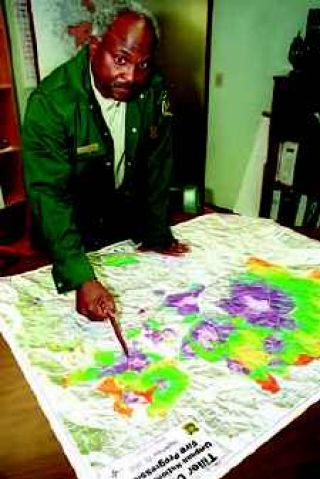NORTH BEND – When Rudy Edwards, district ranger for the U.S. Forest Service’s Snoqualmie Ranger District, sees a fire in the woods, he wants to run in the opposite direction of everyone else.
“It’s like when firefighters see a house burning and they want to run in,” he said. “When I see the woods burning, I want to run in there.”
He was on hand as the Forest Service assisted other agencies in fighting fires in southern Oregon this summer. Edwards helped fight two separate fires in the Umpqua National Forest, located between Interstate 90 and Crater Lake National Park, that burned more than 90,000 acres over several sites.
For 20 days in August and September, Edwards aided in coordinating the work of 2,300 firefighters and additional specialists. Edwards, who has a graduate degree in forest soil science, served as a resource supervisor, overseeing those who accessed the fire’s damage to the area’s natural resources.
A typical day for Edwards began when his alarm went off at 5 a.m., giving him time to wake up for his 6:30 a.m. meeting that was followed by breakfast. He would go out to sites all day and return in the evening for dinner, more meetings and e-mail catch-up. He tried to be in bed by 11 p.m., sleeping in a tent as nighttime temperatures sank below 40 degrees at times.
“I got pretty tired,” said Edwards, who worked beyond the typical 14-day rotation.
He developed what is called a “firefighter’s cold,” a hoarse cough caused by the constant exposure to smoke, ash and whatever else is flying around in the air during a forest fire. Although he sounded pretty rough sometimes, Edwards said it was a normal reaction for lungs that are not used to the harsher elements in the air.
For the complete story, pick up a copy of this weeks Valley record


